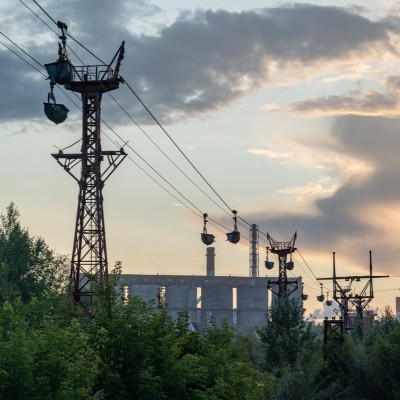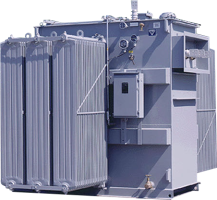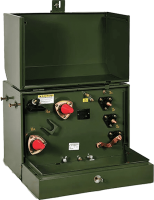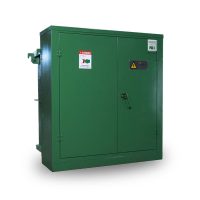Sizing a transformer correctly is a cornerstone of electrical system design. At Premier Transformer, we know that the right size ensures peak performance, safety, and cost savings—while mistakes can lead to inefficiency, breakdowns, and hazards. Many overlook key factors, resulting in:
-
- Higher energy costs and reduced efficiency
- Overheating and early equipment failure
- Voltage issues damaging connected devices
- Wasted capital on oversized units
- Frequent maintenance and downtime
Improper sizing doesn’t just hurt performance—it shortens transformer life and spikes replacement costs. Undersized units strain under load; oversized ones squander resources. This guide highlights common pitfalls and how Premier Transformer helps you avoid them for a reliable, efficient system.
Understanding Transformer Basics
A transformer transfers electrical energy between circuits via electromagnetic induction, relying on:
-
- Primary Coil: Takes input voltage and creates a magnetic field.
- Secondary Coil: Converts the field into output voltage.
- Magnetic Core: Channels flux for efficient power transfer.
The turns ratio (primary to secondary windings) sets voltage transformation, while power stays constant across coils. Current adjusts inversely to voltage. These basics drive sizing decisions—Premier Transformer leverages this science to match your load, voltage, and power factor needs precisely, up to 200 MVA and voltages like 138kV or 415V.
Types of Transformers We Offer
We provide three key types, each built for specific roles:
-
- Step-Up Transformers: Boost voltage for transmission (e.g., solar farms, grids).
Key Use: Long-distance power efficiency.
-
- Step-Down Transformers: Lower voltage for safe use (e.g., 7200V to 240V).
Key Use: Homes, offices, and HVAC systems.
-
- Isolation Transformers: Maintain voltage while isolating circuits.
Key Use: Medical devices, data centers, and labs.
Our in-house design and global standards (IEEE, ANSI) ensure each type meets your application’s demands—whether it’s robust insulation or precise impedance.
Common Mistakes in Transformer Sizing
Avoid these errors to protect your system’s performance and longevity. Premier Transformer’s expertise ensures you sidestep them all.
1. Ignoring Power Factor
Power factor (real power ÷ apparent power) shows how efficiently power is used. Ignoring it undersizes transformers, as a low factor (e.g., 0.8) demands 25% more capacity (100kW ÷ 0.8 = 125kVA). This leads to heat, losses, and tripping. We calculate it right—our in-house engineers factor it in every time.
2. Underestimating Peak Load Demand
Peak loads—like motor startups (5-7x normal current)—can overwhelm undersized transformers, causing heat, sags, and failures. A factory averaging 75kVA might hit 150kVA at peak. We add a 15-25% buffer, analyzing your max demand to keep voltage steady and equipment safe.
3. Neglecting Environmental Conditions
Heat, altitude, and humidity cut capacity—10°C over the limit halves life, and high altitudes (above 3300ft) need derating (0.4% per 100m). Coastal salt or dust adds risks. Premier Transformer adjusts for your site, using sealed designs or extra cooling, ensuring reliability anywhere.
4. Not Including Future Expansion Needs
Growth happens—new equipment or upgrades can outstrip an initial size. A 75kVA plant might need 100kVA in 3 years. We plan ahead with a 15-25% margin, balancing cost (10-20% more upfront) vs. replacement (200-300% later). Our foresight saves you downtime.
5. Miscalculating Load Requirements
Missing motor inrush, harmonics, or diversity over- or undersizes units. Nameplate-only math skips real usage. We measure demand, diversity, and profiles—our detailed load studies, backed by in-house testing, nail the perfect kVA for efficiency and longevity.
6. Choosing Oversized Transformers
Oversizing hikes costs and losses—units at 20-30% capacity drop to 15-25% efficiency vs. 35-50% when matched. We optimize with a 10-15% margin, avoiding wasted space and energy. Our custom builds ensure you pay for what you need, not more.
7. Overlooking Regular Maintenance
Even a perfect size fails without care—neglect cuts life from 20-30 years to 7-10. Monthly checks, quarterly scans, and annual tests keep it humming. We design for easy upkeep and offer guidance, maximizing your transformer’s rated capacity.
8. Using Incorrect Calculation Methods
Errors like skipping harmonics or misapplying kVA (e.g., kVA = V × I ÷ 1000 for single-phase) skew results. We use precise tools and verify against standards, factoring in voltage, current, and derating—our systematic approach eliminates guesswork.
The Premier Transformer Advantage
Why trust us? Backward integration—we control design, manufacturing, and testing in-house, ensuring flawless sizing. Serving global markets, from EV stations to hospitals, our transformers meet IEEE and ANSI standards. Our engineers don’t just size—they safeguard your system with tailored precision.
Sizing mistakes cost more than money—they risk safety and reliability. Avoid them by:
-
- Factoring in power factor and peaks
- Planning for growth and environment
- Measuring loads accurately
- Maintaining regularly
With Premier Transformer, you’re covered. Contact us today for expert sizing and solutions that power your world safely and efficiently.




